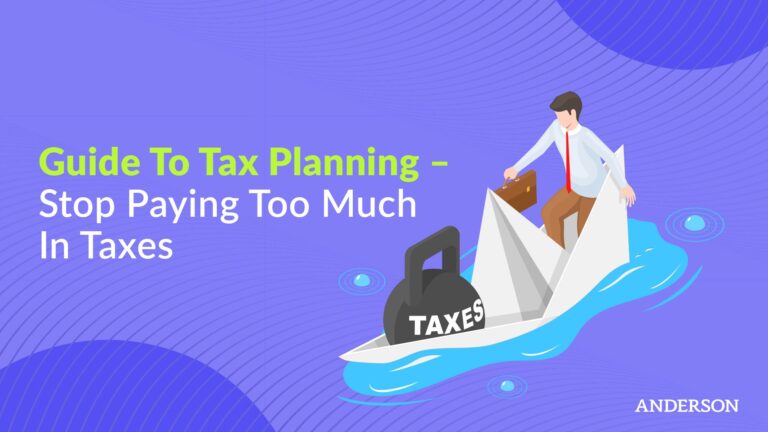
There are many reasons for starting a nonprofit. Some individuals or groups may wish to support a charity or other cause that it is important to them. Other individuals may choose a nonprofit because it offers a variety of tax and legal benefits for some organizations.
Notice: If you own a business, you will need to become compliant with the US Corporate Transparency Act
How to Start a Nonprofit
- Create a Leadership Team for the Nonprofit
- Identify and Create a Mission Statement
- Discuss and Draft Bylaws for the Nonprofit
- Complete and File Nonprofit Articles of Incorporation
- Apply for 501(c)(3) Tax-Exempt Status
- Obtain Federal and State Licenses and Permits
- Write a Nonprofit Business Plan
How much money is required to start a nonprofit? In many states, the filing fees for nonprofit Articles of Incorporation and related documents are typically less than $200.
For example, the filing fees in California for a nonprofit corporation are:
- Nonprofit Articles of Incorporation: $30
- California charitable registration: $25
- Statement of information: $20
- California Franchise Tax Board exemption: $25 ($0 for exemption request)
By contrast, the filing fees in Texas for a nonprofit corporation are:
- Certificates of Formation: $25
- Consent of Registered Agent to Appointment: $5
- Nonprofit Periodic Report: $5
In addition to state filing fees, the Internal Revenue Service charges an application fee of up to $850 to apply for 501(c)(3) status.
Of course, the filing fees to incorporate a nonprofit and obtain tax-exempt status are only a small portion of the money you need to operate a nonprofit organization. Starting and operating a nonprofit are two different matters.
Once you start a nonprofit, you need capital to pay expenses related to day-to-day operations. Common operating costs incurred by a nonprofit organization include:
- Wages and employment benefits for the Board of Directors, officers, managers, office staff, and other workers
- Utilities, rent, equipment leases, communications, office equipment, supplies, internet, and other fixed operating costs
- Flexible expenses such as temporary employees, advertising, rental fees, cost of fundraisers, etc.
- Expenses directly related to the purpose of the nonprofit, such as research costs, costs related to services provided by the nonprofit, and program fees
Most nonprofit organizations strive to keep overhead and operating expenses as low as possible so that they can invest the maximum amount of money into the organization’s purpose and mission.
Can I start a nonprofit organization with no money?
Generating funds to operate nonprofit organizations can be difficult when you first start a nonprofit. However, there are ways to raise money once you start your nonprofit. Examples of ways that charitable organizations can raise money include:
- Themed charity events: lower costs by seeking donations from local vendors, donors, and companies
- Individual donations from the community and online
- Federal, state, corporate, and private grants
- Memberships
- Annual fundraising letters for charitable donations through direct mail
- Viral fundraising campaigns
- Yearly pledges to generate funds throughout the year

There are many ways to generate funds to operate charity organizations. However, before you can begin to help people, follow these steps to start a nonprofit.
Follow These Steps to Start a Nonprofit
It is not difficult to start a nonprofit. In some cases, the hardest part of starting a nonprofit is finding like-minded individuals. Once you find a group of individuals willing to invest their time and resources into a cause important to them, the remaining steps to start a nonprofit mainly involve complying with state and federal laws and rules governing nonprofits.
1. Create a Leadership Team for the Nonprofit
A successful nonprofit is built on a strong leadership team. The group should consist of individuals who share a common vision for the nonprofit organization and a strong commitment to the nonprofit’s mission. Most nonprofits begin with a small Board of Directors, including an Executive Director, and several volunteers. Once the organization is incorporated and has sufficient funding, the board members can begin hiring staff members and provide compensation for the Executive Director.
Finding directors for your leadership team usually involves looking within a group of people who are working together to promote a common interest or to achieve a common goal. It can help to search for individuals within the group who have specific skills that may benefit the nonprofit organization to serve on the Board of Directors.
For example, does someone in your group possess legal, accounting, marketing, fundraising, or other training that would benefit the nonprofit, especially as you are organizing and forming the nonprofit organization? If so, these individuals may be perfect candidates for the leadership team and Board of Directors.
2. Identify and Create a Mission Statement
The next step is to create a mission statement. Your mission statement typically answers three important questions:
- What is the purpose of the nonprofit organization? —What is driving the organization’s work? What issues does the nonprofit address or who benefits from the organization’s work?
- How does the nonprofit accomplish its purpose? — What specific steps or actions does the nonprofit take that address the issue or purpose?
- Why does the nonprofit organization do what it does? — What is the real-world impact of the nonprofit’s work?
A clearly defined mission statement is vital for a successful nonprofit because the mission statement serves as a guide for all activities of the nonprofit organization while communicating the organization’s broader purpose to the public and potential donors. The mission statement is used by the nonprofit to formulate a tagline and funding pitch.
You must be able to condense the purpose of the nonprofit into a precise statement explaining why the organization exists, who are the individuals who benefit from the organization’s efforts, and how the organization serves these individuals. A nonprofit mission statement should be memorable and make a compelling argument for the need it fills.
Remember, your mission statement is not static. The statement must be reviewed and revised to accurately reflect the current purpose and vision of the nonprofit.

3. Discuss and Draft Bylaws for the Nonprofit
Nonprofit bylaws are essential for governing the operations of the organization. Bylaws are also required to obtain tax-exempt 501(c)(3) status. The Board of Directors should work together to develop bylaws that address crucial areas of nonprofit management and organization.
Nonprofit bylaws include, but are not limited to:
- Name and location of the nonprofit organization
- Formal mission statement and purpose
- Appointment and election of a Board of Directors and officers
- The definition of leadership and staff positions, including the duties and responsibilities assigned to each role
- Compensation and indemnification of directors
- Creation and operation of committees
- Rules and procedures for conflicts of interest
- Provisions related to obtaining and retaining tax-exempt status under 501(c)(3)
- Amendment of the bylaws
- Dissolution of the nonprofit
The bylaws for the nonprofit are the primary official document of the organization. The bylaws govern virtually all operations. Most nonprofits make their bylaws public to increase trust from supporters, potential donors, and beneficiaries by encouraging transparency and accountability.
Because a nonprofit’s bylaws are legally binding, it can be very helpful to retain professional assistance in drafting bylaws. The legal requirements for nonprofit bylaws can vary by state. A professional with experience in nonprofit matters can ensure that the bylaws comply with all federal and state requirements and include elements that can reduce the risk of legal issues and liability in the future.
4. Complete and File Nonprofit Articles of Incorporation
What forms do you need to file to create a nonprofit?
There are several reasons why starting a nonprofit organization should begin with filing Articles of Incorporation. Reasons for forming a business entity include:
- The IRS typically requires incorporation to receive tax-exempt status under 501(c)(3)
- Incorporating limits the personal legal liability of the offices and directors of the nonprofit
- Incorporating often gives nonprofit organizations additional credibility
In most cases, an organization incorporates in the state in which it intends to offer services. The nonprofit also needs to register and apply for tax-exempt status in each state in which the non-profit organization wishes to conduct business.
The process of filing nonprofit Articles of Incorporation varies slightly by state, so it is important to research the process in your state or consult a corporate attorney or nonprofit attorney to ensure everything is legal. You can also visit irs.gov for more information about nonprofit requirements for each state.
Most states provide the approved forms for incorporating a nonprofit to parties who request copies. Whether you obtain forms from the state or purchase forms, it is crucial that the articles include language required by the Internal Revenue Code to obtain tax-exempt status.
5. Apply for 501(c)(3) Tax-Exempt Status
After registering with the state, a nonprofit can apply for tax-exempt status with the Internal Revenue Service. Even though the process to obtain 501(c)(3) tax-exempt status can be time-consuming, it is important that a nonprofit organization takes the time to ensure that the process of applying for exempt status is completed correctly to avoid paying federal and state taxes.
Before applying for tax-exempt status, the nonprofit must:
- File nonprofit Articles of Incorporation and register with the state in which the organization is doing business
- Apply for and receive an employer identification number (EIN) from the Internal Revenue Service
- Create and execute the organization’s bylaws
- Check for state-specific tax-exempt requirements
- Determine the type of 501(c)(3) status that applies to the nonprofit. The type of organization determines which IRS forms you need to complete and any specific requirements necessary for tax-exempt status.
Careful attention to detail is required when completing the IRS forms for exempt status. Denial of 501(c)93) status can result from failure to submit fees or filing forms that have: missing documents, inadequate programming schedules, incomplete financial schedules, or inadequate financial data.
It is crucial that the organization follows the tax obligations and tax policies for a nonprofit organization while it awaits approval as a tax-exempt organization. Compliance with all applicable sections of the Internal Revenue Code is essential, including financial reporting protocols and obligations for tax-exempt organizations. Working with a tax expert and accountants familiar with tax laws and accounting requirements for a nonprofit corporation can help avoid tax problems, now and in the future.
6. Obtain Federal and State Licenses and Permits
Depending on the activities of the nonprofit organization, tax-exempt corporations may require one or more federal and state licenses and permits. Even though the corporation has tax-exempt status as a nonprofit organization, that status does not exempt the company from other laws.
The Board of Directions or the officers may want to assign a committee to research federal and local laws to ensure that the company has all required permits and licenses to perform the services necessary to carry out the company’s mission and purpose.
7. Write a Nonprofit Business Plan
A nonprofit business plan is a roadmap for the organization. It contains short-term and long-term goals for the organization and how the directors intend to achieve those goals. While a business plan is not legally required, creating a nonprofit business plan has numerous benefits.
The benefits of creating a business plan when you form a nonprofit are numerous. A business plan:
- Identifies goals for the charity and establishes milestones as a pathway for reaching those goals
- Attracts potential donors, directors, board members, volunteers, and officers
- Supports a grant proposal to explain the nonprofit’s mission in further detail
- Helps the organization remain on track and focused on long-term goals
Sections of a nonprofit business plan include:
- An executive summary
- Organizational structure
- Management and organizational team
- Description of services and programs
- Marketing plan
- Operational plan
- Capital structure
- Financial plan
- Summary
- Appendix
The business plan can be tailored to the nonprofit organization. A plan should be reviewed periodically and updated to reflect the organization’s current position and goals.

How Long Does It Take to Start a Nonprofit?
In most cases, you can start a nonprofit in just a few weeks. Most state agencies process filings for nonprofits quickly. However, obtaining 501(c)(3) tax-exempt status can take up to a year. Depending on the type of nonprofit, the process of becoming exempt can be lengthy. As mentioned above, charitable organizations should operate as a nonprofit while waiting for their 501(c)(3) status to avoid any tax problems.
Why does it take the IRS so long to approve my 501(c)(3) application?
It may seem like it is taking forever for you to receive the determination letter from the IRS after filing your 501(c)(3) application. The reason it takes so long for you to receive your determination letter could be a backlog at the Internal Revenue Service, or it could be the result of a mistake on your application for tax exempt status.
Mistakes are the most common reason for a delay in receiving exempt status. Detailed preparation is one of the best ways to avoid delays regardless of the type of nonprofit seeking exempt status. The Internal Revenue Service has compiled a list of the top 10 tips to reduce the waiting time to receive tax-exempt status for charity organizations:
- Always include the correct user fee. The user fee must be a money order or check payable to the United States Treasury.
- Corporations must include a complete copy of the nonprofit Articles of Incorporation filed with the state. For charity organizations that are not incorporated, the applicant must submit documents that demonstrate a similar organization such as bylaws, constitution, or articles of association. Remember: at least two members of the organization must sign the organizing documents. Trusts require the signature of the trustees. Verify that the organizing documents meet the organizational test under Internal Revenue Code 501(c)(3).
- Include a detailed description of the specific activities the nonprofit will perform to achieve its purpose. A common mistake many applicants make is restating the organization’s mission statement. The information included with the 501(c)(3) request must include details of past, present, and planned activities.
- Do not leave any pages or information blank. Depending on the type of nonprofit organization, the required forms may contain additional schedules which must be completed in addition to completing the primary form.
- If a response requests supporting schedules or documentation, do not forget to include those documents with the form.
- Double check the ending date of your annual accounting period stated on the application. The ending date on the application should match the date on your financial statements, previously filed returns, and nonprofit bylaws.
- A lack of financial data can result in a delay in the approval of the tax-exempt status for a nonprofit organization. Verify that all financial data requested on Form 1023 and all schedules are included with the application.
- If the organization adopted a code of regulations, bylaws, or another document that describes or outlines the organization’s rules of operation, do not forget to include a copy with Form 1023.
- Do not forget to sign the documents. The forms require an original signature by a trustee, director, principal officer, or another authorized individual. The individual cannot be a representative, and the signature can be a stamp, electronic, or faxed signature.
- For each principal officer and director, include the person’s name, mailing address, title, position, and annual compensation.
It can be very helpful to have several individuals review the forms and all attachments before filing an application for tax-exempt status with the Internal Revenue Service. Having several people review the application reduces the risk that one person overlooks an error before the package is mailed to the IRS.
What Are the Benefits of Forming a Nonprofit Corporation?
A group may work together to pursue a charitable purpose through an association or informal organization. However, there are distinct advantages to forming a nonprofit corporation versus an informal charitable organization.
For example, forming a nonprofit corporation means that the organization is a separate legal entity from the parties who formed the charity. The nonprofit organization can enter contracts and borrow money in its name. The fact that the charity is a separate legal entity protects directors and officers from personal liability for the organization’s liabilities and debts.
When you start a nonprofit, forming a nonprofit corporation can give you access to additional funding, including government, private, and grants. Some grants are only available for 501(c)(3) corporations. Incorporating also allows the charity to accept tax-deductible donations, which can increase donations from individuals and companies searching for tax deductions. Some nonprofit corporations receive discounts and exemptions from state sales and property taxes.
Like a corporation, a charity has additional credibility. Donors and companies may prefer to work with a charity that is a corporation than working with a charitable organization that has not taken steps to become tax-exempt.
Are You Ready to Start a Nonprofit?
Do you have a cause that you believe in and want to support? Are you a member of a group that believes it can make a difference in the lives of others in your community? If so, you may want to start a nonprofit to expand your efforts to help others. If you are ready to start a nonprofit, you can benefit from seeking assistance from a tax professional.
A tax lawyer can save your organization time and money by providing tax planning and support as you organize and incorporate your nonprofit and file for 501(c)(3) status. A group or individual is not required to retain an attorney or tax professional to file for tax-exempt status.
That being said, completing forms, filing various state and federal applications, and ensuring compliance with regulations and laws can reduce the time a charity has to focus on its mission and service to others. Hiring a tax professional to handle the legal aspects of incorporating the nonprofit allows you to focus on the mission of the charitable group instead of the legal aspect of setting up a nonprofit corporation.
If you have questions or require guidance with a nonprofit, contact Anderson Business Advisors at 800-706-4741 to speak with an experienced, qualified tax professional or business advisor.
As always, take advantage of our free educational content and every other Tuesday we have Toby’s Tax Tuesday, another great educational series. Our Structure Implementation Series answers your questions about how to structure your business entities to protect you and your assets. One of my favorites as well is our Infinity Investing Workshop.
Additional Resources:
- Claim your FREE Strategy Session
- Join our next Tax & Asset Protection event to learn more advanced tax minimization & entity structuring strategies
- Subscribe to our YouTube channel to make sure you never miss the latest strategies & updates
Bonus Video
 The greatest mistake that people make when it comes to asset protection for real estate is not understanding the risks that are waiting out there for them. This eBook reveals the structure you should follow to ensure your hard earned money is protected from frivolous lawsuits and costly tax mistakes.
The greatest mistake that people make when it comes to asset protection for real estate is not understanding the risks that are waiting out there for them. This eBook reveals the structure you should follow to ensure your hard earned money is protected from frivolous lawsuits and costly tax mistakes.















